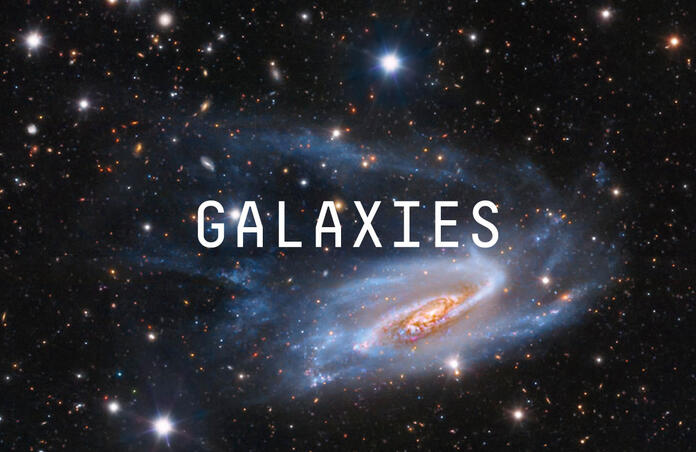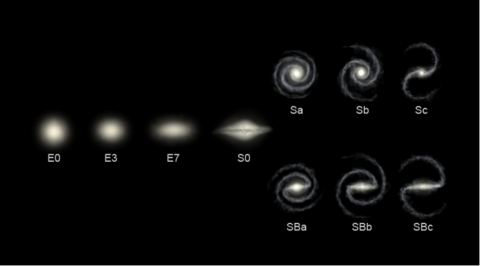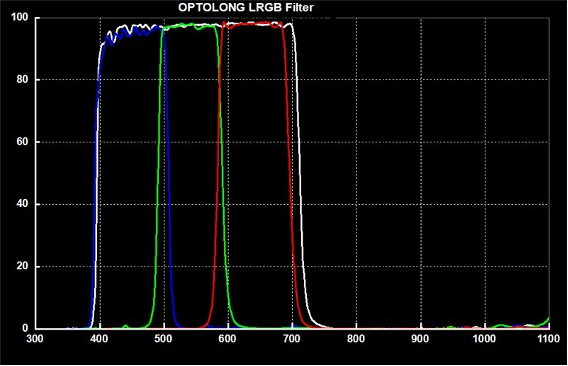What is a Galaxy?

In the article Deep Sky Classification, we learned about the large-scale structures that galaxies can form. Here I will focus on the different types of galaxies and give you some tricks on how to observe them.

Edwin Hubble’s “tuning fork” sequence makes a distinction between galaxies’ shapes, and also reflects other properties they can exhibit. Originally it was thought to represent an evolutionary path for galaxies, however it is now understood that the three types (and their subtypes) have different evolutions and show unique properties.
Elliptical galaxies are denoted by a number from 0 to 7 that indicates how elongated their shape is, 7 being the most extended. All of them contain older stars, don’t have many star-forming regions, and massive ones all have a black hole at the centre around which the stars orbit.
Spiral Galaxies come in two forms: Spiral Galaxies and Bared Spiral galaxies like our own Milky Way, with a central bar-shaper elongation. In both cases, the central group of stars is called the bulge and the spiral arms are the denser regions of the disc, “coming out” of the bulge. The additional lowercase letter a, b or c refers to the tightness of the arms around the galaxy. Spiral arms contain younger, bluer stars as well as star-forming regions with interstellar gas dust, while the bulge includes stars which are older and tend to appear red.
In the special case of lenticular galaxies S0, there is also a bulge and disc but no spiral arms.
Note that aside from the three types we have been discussing, there are also irregular galaxies whose shapes and properties don’t let them fit in any category; in particular, some of those were once spiral or elliptical galaxies but were deformed by the gravitational attraction of a passing object, usually another galaxy.

To observe a galaxy or a group of galaxies, it is best to use the Luminance, Red, Blue and Green filters. The Luminance filter is a clear filter, but actually this is the one that allows for precision in the image. It blocks Ultraviolet and Infrared wavelength, and so it covers all of the visible spectrum that with Red, Blue and Green filters you only observe partially. This means that a higher signal will reach the detector, i.e. more light and thus details will be captured. On the other hand, the colour filters will be useful for just that – colouring the image.
If your target is a very distant galaxy, it will be fainter, and you will need longer exposure times – that means you will take multiple images in each filter and when processing stack them, which is like piling them up on top of each other. Effectively, stacking means each pixel will get the average value from the multiple frames, which reduces noise (an unwanted fluctuation in the received signal), thus enhancing details on the stacked image.
cover: NGC 3981, Adam Block, 02/2020-04/2020, CHI-3
Images credits:
1- Type of Galaxies
2- 365 Astronomy, Optolong LRGB-CCD Filter Set 1.25" - Set of Luminance (IR-cut, Red, Green and Blue CCD Filters)
